Gone, But Not Forgotten: Campus Celebrates Dia de los Muertos
Vibrant ofrendas, a formal procession with traditional Aztec dancers and candlelit evening remembrances. These were all part of the Dia de los Muertos celebrations that took place over three days across the CSUN campus, where students, staff, and community members remembered loved ones who have died. Multiple ofrendas went up all around the campus, including the University Library, which partnered with Chicana/o Studies (CHS) students and faculty to build it.
On Nov. 1, the University Student Union (USU) set up a community ofrenda, filled with paper marigolds, candles, photos, the festive tissue-paper banners known as papel picado, and other handmade decorations. For more background on ofrendas, check out this story on ofrendas.
H. Landeros, a student assistant in the USU’s Pride Center, built the ofrenda inside the Sol Center. On Nov. 3, Landeros and other organizers hosted a free program in the Plaza del Sol, where they played music and handed out free tamales, coffee, and candy. They also distributed flyers for the beloved annual Dia de los Muertos event hosted by the Chicanx House on Plummer Street later that night.
The Noche de Ofrenda, or night of offering program, began with a procession from Jerome Richfield Hall to the Chicanx house, where students and staff in the College of Humanities Department of Chicana/o Studies and Mike Curb College of Arts, Media, and Communication’s Department of Art presented ofrendas and deeply personal art pieces.
Students and faculty from the Chicana/o studies department, in collaboration with the student organization El Movimiento Estudiantil Chicano de Aztlan (MEChA de CSUN), organized the event. Students and guests alike were invited to put pictures and offerings of their loved ones on the large community ofrenda to be blessed. One of the spectators, junior English major Maria Jimenez, slowly approached the tables and placed her things.
“I brought a photo of my abuelita, my grandmother. We were very close, and she passed away a few years ago,” Jimenez said. “She was a big supporter of my education, and I always miss her — so being able to honor her here at my university feels special. I also brought her a can of Sprite. [It was] her favorite.”
The event lasted late into the evening, with participants making a constant stream through the Chicanx House and around its patio to admire the outdoor and indoor ofrendas and add items.
Before Landeros and other students built the altar, the USU invited consultants in to teach about the importance of each element of an ofrenda, Landeros said. The consultants were the same ones who advised Pixar Animation and Walt Disney Pictures when they were making the 2017 hit movie “Coco.”
“The one rule they had was that you needed all of the elements. Earth, water, air, and fire,” Landeros said. “For earth, we made the marigolds and added succulents and moss. For water, we just placed glasses of water on there. For air, we made butterflies out of some material we already had available. And for fire, we had tealight candles.”


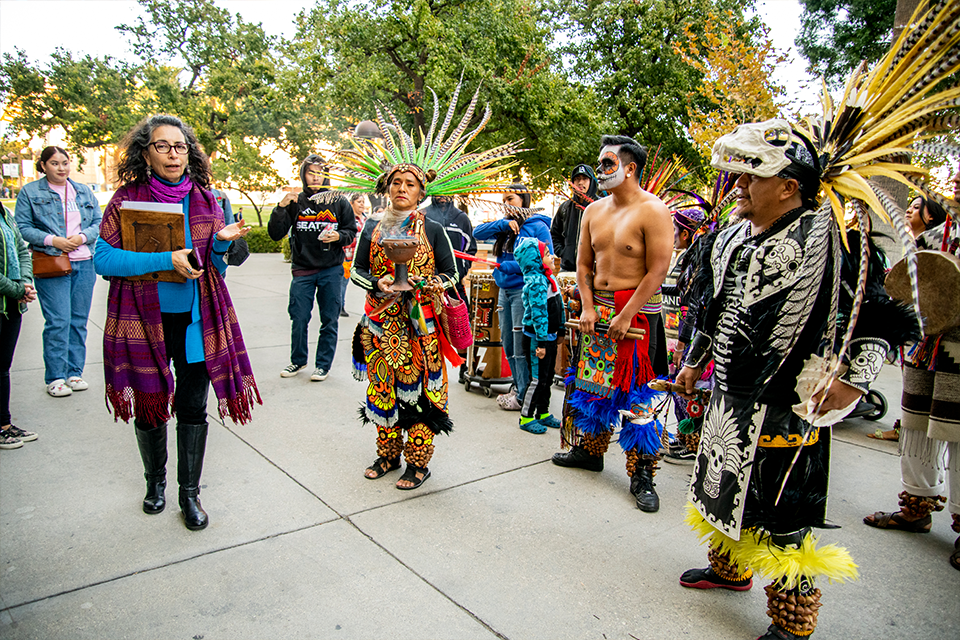
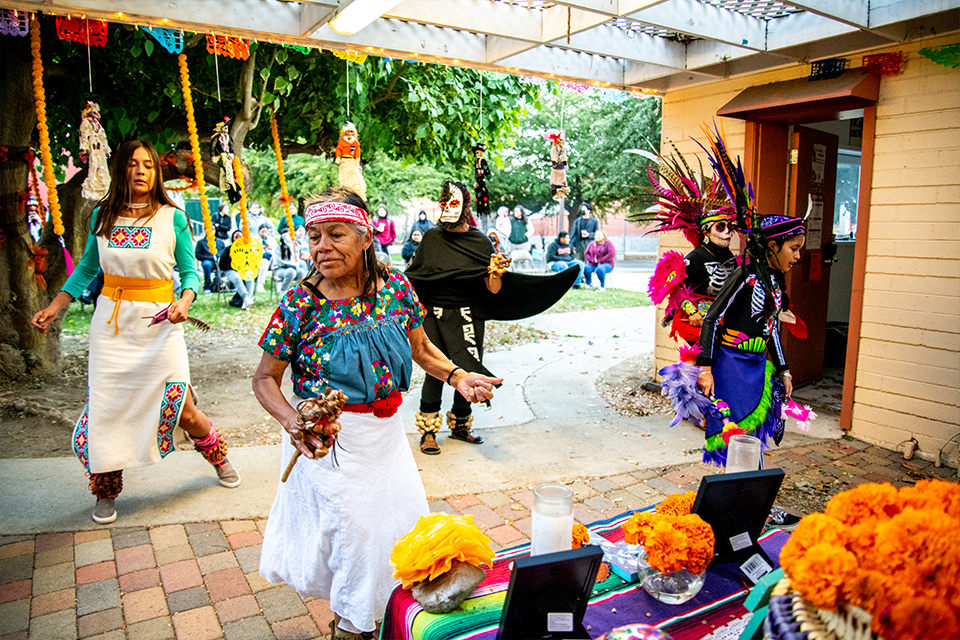
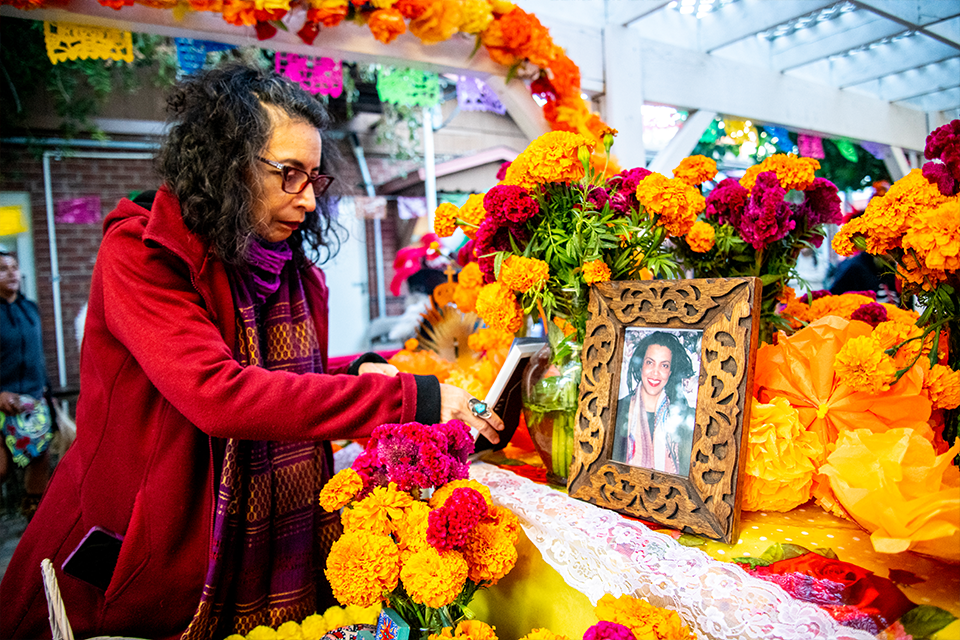

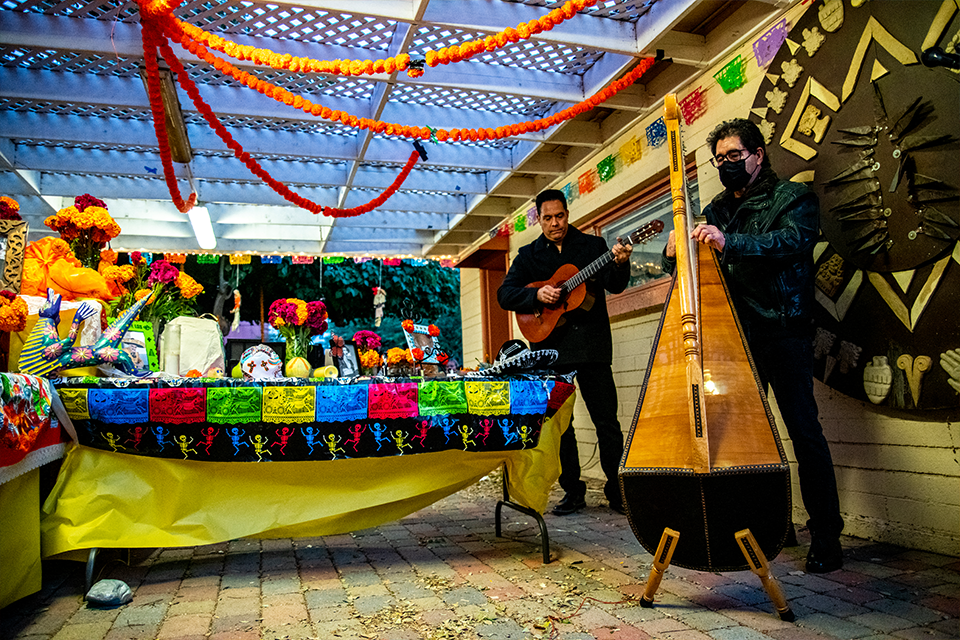
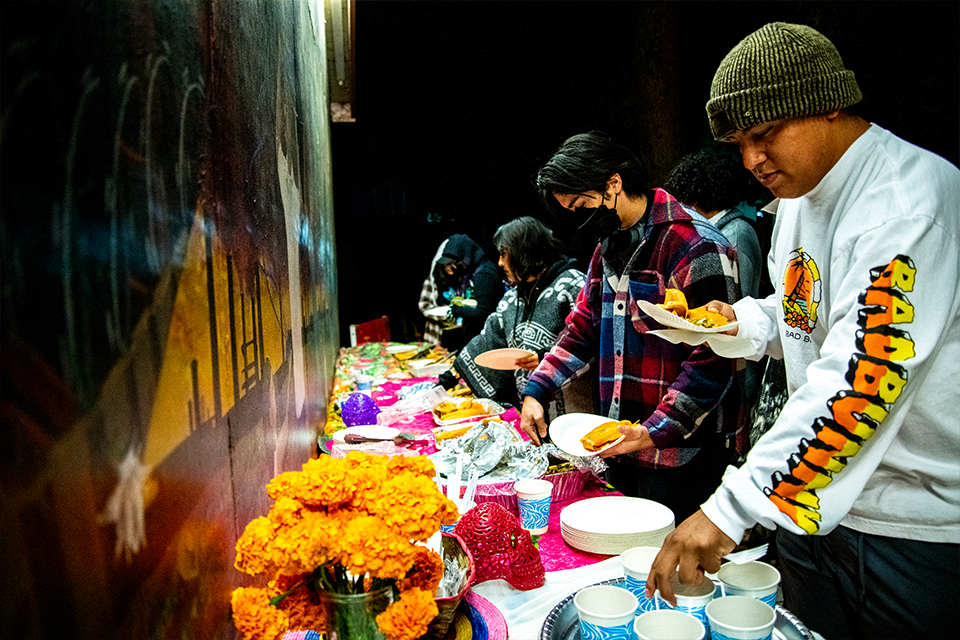
 experience
experience